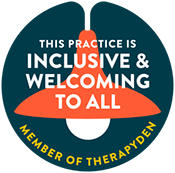The American Psychological Association states that anxiety entails sensations of stress, apprehension, and bodily alterations. Anxious sensations may manifest in diverse circumstances, varying in intensity. While occasional anxiety is common, persistent feelings of anxiety that impede your daily activities indicate the need to seek therapy and implement coping strategies. Although there are various forms of anxiety, here, we will focus on the overarching concept of anxiety.
Anxiety “Unmasked”— Tools for a Stress-Free Mind
Anxiety has the potential to disrupt your everyday routines. Recognizing the signs and causes of anxiety can assist in managing it effectively.

Symptoms of Anxiety and The Effects
Symptoms of anxiety such as irritation, excessive worrying, insomnia, feelings of nausea, rapid heartbeat, and palpitations can leave individuals feeling overwhelmed and out of control. Anxiety can negatively impact social interactions, physical well-being, and mental health, as well as interfere with one’s career, personal relationships, and social life.
Clients can utilize a variety of methods to manage anxiety including journaling, aromatherapy, and exercise. Regular exercise can boost dopamine and endorphin levels, ultimately reducing feelings of anxiety. This can positively impact symptoms such as irritability, insomnia, and panic attacks that are commonly associated with anxiety. Establishing an exercise routine has proven effective in lowering stress levels that contribute to anxiety. Aromatherapy is another soothing practice that can aid in relieving anxiety. Pleasant scents like lavender, vanilla, and citrus have been known to assist in stressful situations. Incorporating activities such as lighting candles, taking aromatic baths, or using scented oils can help soothe frazzled nerves in the moment.
Additionally, journaling serves as a method to alleviate stress and express emotions. Establishing a consistent journaling routine can assist in unloading the pressures of day-to-day living. It has been noted by many that journaling provides an outlet for emotions without fear of judgment. Whether through writing or audio journaling, discovering the approach that suits you best is crucial to your success.
Conclusion
That being said, anxiety may present numerous obstacles for individuals facing such struggles. Nonetheless, by making deliberate efforts, strategies can be implemented to reduce the symptoms related to anxiety, enabling these individuals to lead fulfilling and healthy lives.
Follow us for more wellness content!
More Blog Posts

Recovery: Relapse Prevention Plan
When an individual relapses, it can be disheartening and a huge setback within their recovery journey. Therefore, having a relapse prevention plan is a vital component within long-term recovery.

Supporting Children with Behavioral Issues Through Parent-Child Interaction Therapy (PCIT)
Parent-Child Interaction Therapy (PCIT) helps children with behavioral issues, enhancing parent-child relationships effectively.
In crisis or need immediate help?
Call 988 or go to your nearest ER.
Services
Adolescent Psychotherapy
Adult Psychotherapy
Assessments & Evaluation
Child Psychotherapy
Cognitive Behavioral Therapy
Couples Therapy
Family Therapy & Parent Coaching
Genetic Testing
Group Therapy
Medication Management
Play Therapy
Single-Session Therapy
Teletherapy
Orchard Mental Health Group
Accepted Insurance*
Aetna
Carefirst / Blue Cross Blue Shield
Cigna
Humana / Tricare
Johns Hopkins Health Plans
Medicaid
Medicare
Optum / UnitedHealthcare
*Varies by service
Partner Resources
Contact Us
M-F, 9am-5pm Eastern Time
Phone: 240-750-6467
Fax: 240-912-7835
contact@orchardmentalhealth.com
9707 Key West Avenue, Suite #100 Rockville, MD 20850










